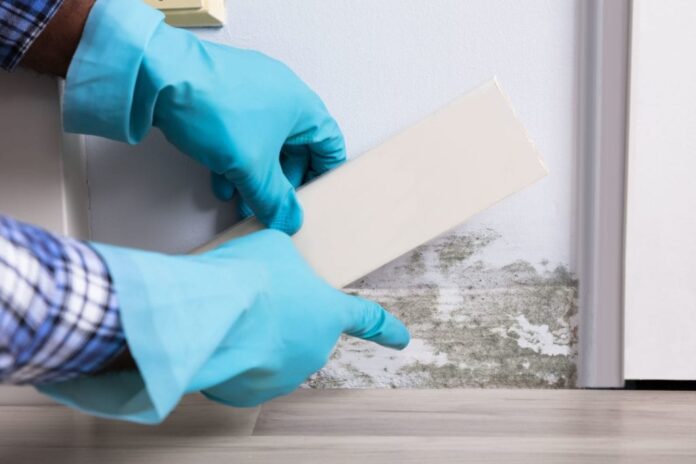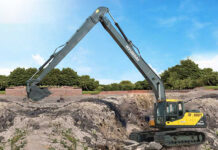Mold testing is an important process when it comes to identifying potential health risks posed by mold in a building or structure.
It’s essential to have a thorough understanding of both the benefits and limitations of each type of test available, in order to choose the one that will be most beneficial in any given situation.
In this guide, we’ll cover:
- Why is mold testing important?
- Types of Mold Tests
- Advantages & Disadvantages for Each Type
- How to Choose the Right Test
- Tips for Collecting Samples
- Additional Considerations
So what are you waiting for? Read on to learn more!
Why Is Mold Testing Important?
Mold can produce toxins, allergens, and irritants that can have serious effects on human health. Symptoms of mold exposure may include nasal congestion, eye irritation, wheezing, coughing and skin problems such as rashes.
Testing is an important step in determining whether a property has elevated levels of mold that could be hazardous to occupants’ health. It can also help determine if any prevention or remediation measures need to be implemented.
Types of Mold Tests
There are four main types of tests used for detecting mold: air sampling (also known as spore trapping), surface sampling (such as swab testing), bulk material testing, and tape lifting. Each type has its own advantages and disadvantages depending on the situation.
Advantages & Disadvantages for Each Type
Air Sampling
Air samples can be collected using either a direct-reading instrument or a sample collection device.
Advantages include the ability to detect airborne particles that are too small to be seen with the naked eye, as well as quick turnaround times for results.
Disadvantages include limited accuracy in identifying specific molds, as well as potential health risks from exposing testers to high levels of mold spores during sampling.
Surface Sampling
Surface samples are typically collected by taking swabs or wipes of visible mold. These methods are relatively inexpensive and easy to perform, as well as accurate in identifying the presence of specific molds.
However, they don’t provide information about particles that may be present in the air or hidden behind walls or other surfaces.
Bulk Material Testing
Bulk material testing involves collecting a sample of material directly from a surface (such as drywall) and sending it to a lab for analysis.
This method is useful for identifying the type and concentration of mold present in building materials and can help determine if remediation is necessary.
The main disadvantage is that it requires professional sampling equipment and specialized laboratory analysis.
Tape Lifting
Tape lifting involves pressing a piece of adhesive tape onto a surface and then sending it to a lab for analysis.
This method is useful for detecting low-level mold contamination that may not be visible, as well as identifying the type of mold present.
The main disadvantage is that it cannot provide information about airborne particles or hidden mold growth.
How to Choose the Right Test
It’s important to consider the purpose of your test and choose the most appropriate option based on your specific situation.
Some factors to consider include the type of building material you’re testing (for bulk material tests), whether there are any visible signs of mold (for surface tests), and whether you need to know if there are any airborne particles (for air tests).
It’s also beneficial to consult with a professional, such as an industrial hygienist, for advice on which type of test is best for your needs.
Tips for Collecting Samples
When collecting samples, it’s important to follow all safety precautions and use the proper sampling equipment (for example, using a HEPA filter vacuum when collecting bulk material samples).
It’s also beneficial to collect multiple samples from different areas and at different times, especially if there are visible signs of mold or high levels of airborne particles present.
Additional Considerations
Testing is an important step in determining whether there are hazardous levels of mold in a property.
However, it’s important to note that any testing results should be interpreted by a professional and used in conjunction with other factors to assess the overall risk posed by mold.
This can help you make an informed decision about whether or not any prevention or remediation measures need to be implemented.
Conclusion
Mold testing is an important part of assessing a property for potential health risks from mold contamination.
There are four main types of tests that can be used, each with its own advantages and disadvantages depending on the situation.
It’s important to consider the purpose of your test and choose the most appropriate option based on the situation, as well as following proper safety protocols when collecting samples.
Testing results should also be interpreted by a professional in order to accurately determine if any prevention or remediation measures need to be implemented.










![Anso FG Reviews: UPDATED 2024 [ansofg.com] Anso FG Reviews UPDATED 2024 [ansofg.com]](/wp-content/uploads/2023/12/Anso-FG-Reviews-UPDATED-2024-ansofg.com_-100x70.png)







